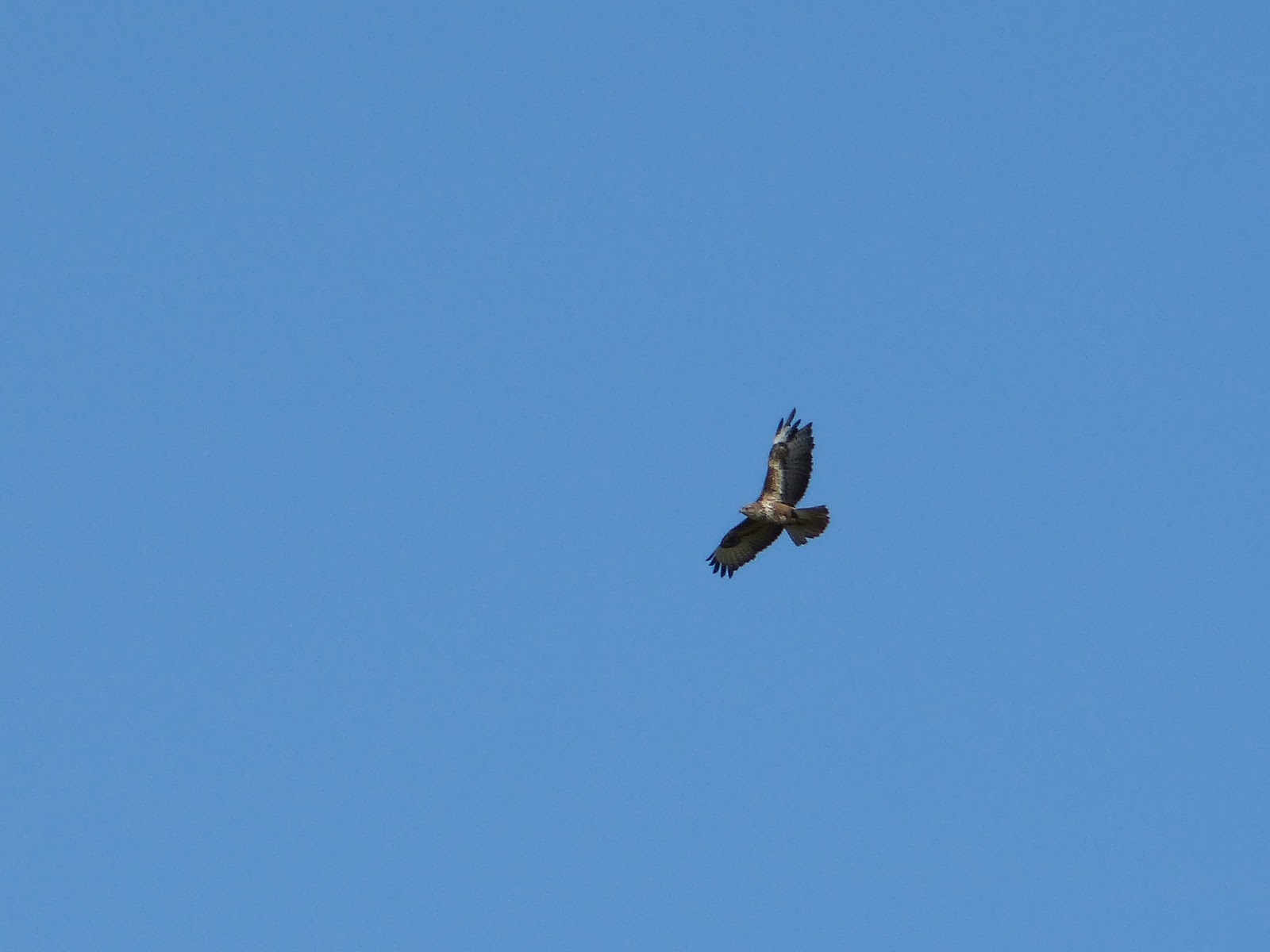Only my second visit to the reserve, and the first for everyone else, we were again spoiled for the abundance and diversity of wildlife we saw. To start off our afternoon, there was a mistle thrush in the trees surrounding the car park, the first I have spotted in a very long time. The three of us who travelled in the first car stood in the car park and absorbed the surrounding birdsong until the second car arrived.
The air was cool and the sky patchy as we walked along the dusty track to the reserve entrance and the first viewing panel. This was the most fruitful location for birds on our first visit here; I was disappointed at the emptiness of the space when we arrived this time. However, we were soon treated to a range of avian visitors, as were we at the Frank Jarvis (Woodland Hide); a proud mother mallard with four ducklings; marsh, coal, blue, great and long tailed tits; treecreepers, nuthatches, green- and chaffinches.
 Crossing the bridge from dry wood to wet wood, a collection of other visitors were watching a hole in the river bank. Finding it unlikely to be a water vole as the hole seemed far too small, we stood, watched and waited until a whisp of brown fur pelted up the bank and into the hole, then back again, slipping silently into the water of the dyke. We watched the exploits of this water shrew until it disappeared into a different hole and out onto the bank into the mid-length grasses. The first water shrew I've knowingly seen, we saw another preening itself on the bank of dry wood / fen near the dyke viewing platform; small, fluffy and unquestionably cute, this too slid noiselessly into the water and disappeared.
Crossing the bridge from dry wood to wet wood, a collection of other visitors were watching a hole in the river bank. Finding it unlikely to be a water vole as the hole seemed far too small, we stood, watched and waited until a whisp of brown fur pelted up the bank and into the hole, then back again, slipping silently into the water of the dyke. We watched the exploits of this water shrew until it disappeared into a different hole and out onto the bank into the mid-length grasses. The first water shrew I've knowingly seen, we saw another preening itself on the bank of dry wood / fen near the dyke viewing platform; small, fluffy and unquestionably cute, this too slid noiselessly into the water and disappeared.Along the edges of the boardwalk, one friend was constantly excited by the invertebrates she was coming across and photographing, but my excitement was for the first Odonata I've seen this year: a large red damselfly. From her colourings; very dark abdominal segments and yellow antehumeral stripes, I would guess at a female of the melanotum colour form. Another highlight of the walk to the Fen hide was the 'mole fortress', a treasure that I had no idea even existed. Apparently, a large structured molehill which allows the mole to escape wet conditions when on land liable to flooding, the elevated 'fortress' gives the mole a high, dry and safe refuge.
From the Whitley (Fen) hide, we were treated to a pair of nuthatches foraging; reed buntings; three bullfinches (one male, two females); majestic circling marsh harriers, which we later found out were prospecting nest sites, causing the path to the scrape hides to be closed, and a buzzard which allowed us several flybys. A tour had finished here too, they told us that they had seen a cuckoo and a red kite, which unfortunately we had not, but it's good to know they're there.
The more I visit this reserve, the more I fall in love with it. Friendly volunteers around the park to point out species and help with i.d., wildlife all over the place, from the 'common' to the obscure and a beautiful habitat. What more could I ask for?











No comments:
Post a Comment